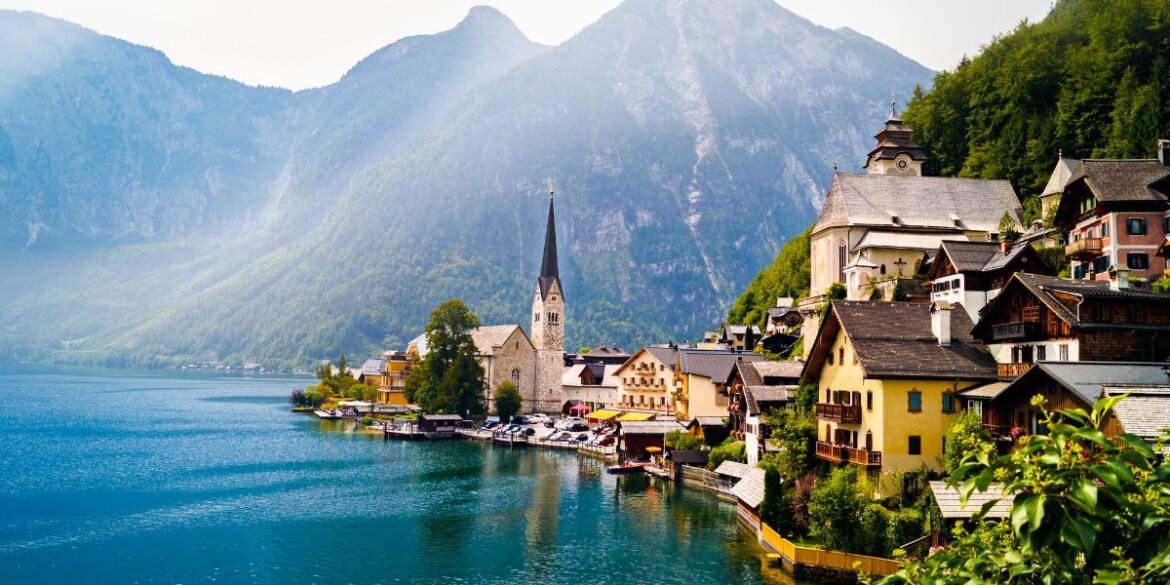Hallstatt, Austria, is a captivating destination that effortlessly appeals to history buffs and outdoor enthusiasts alike. This picturesque village the heart of Austria’s Salzkammergut region, is renowned not just for its scenic beauty but also for its deep historical roots that date back over 7,000 years. Recognized as a UNESCO World Heritage site since 1997, Hallstatt’s charm is perhaps best known for its ancient salt mines, considered the oldest in Europe. These mines not only offer a glimpse into early industrial activity that led to the village’s early success via trade with other cultures throughout Europe, especially with Rome, but also provide stunning panoramic views of the village and its surrounding landscapes from the Hallstatt Skywalk. For archeologists, Hallstatt is considered to be one of the most important sites related to Celtic culture set in the heart of Europe.
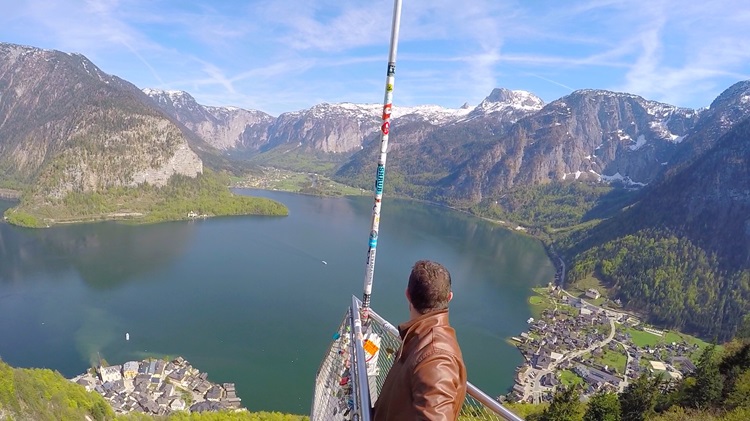
The town’s archaeological significance is magnified by the Hallstatt Museum, where you can explore an extensive display of artifacts that trace the evolution of this area from the Bronze Age to modern times. The museum is particularly engaging for all ages, featuring interactive exhibits that make its rich history accessible and intriguing.
For those drawn to the outdoors, Hallstatt also doesn’t disappoint. It is a gateway to numerous hiking trails and the breathtaking Dachstein Krippenstein, where the adventurous can explore ice caves and the iconic Five Fingers viewing platform, offering unparalleled views of the Alps.
The History and Evolution of Hallstatt
The history of Hallstatt is deeply intertwined with its early establishment as a center for salt production, a tradition that dates back to at least the early Iron Age, around 800 to 450 BCE. This period, now known as the Hallstatt Culture, signifies the beginnings of significant human activity in the region, recognized for its distinctive funerary practices and material culture, particularly richly decorated pottery and metalwork. The settlement’s strategic location along ancient trade routes allowed it to flourish, facilitating the exchange of goods, ideas, and cultural practices across Europe. Salt, often referred to as “white gold,” was especially crucial due to its rarity and necessity, making Hallstatt a significant community in ancient trade networks.
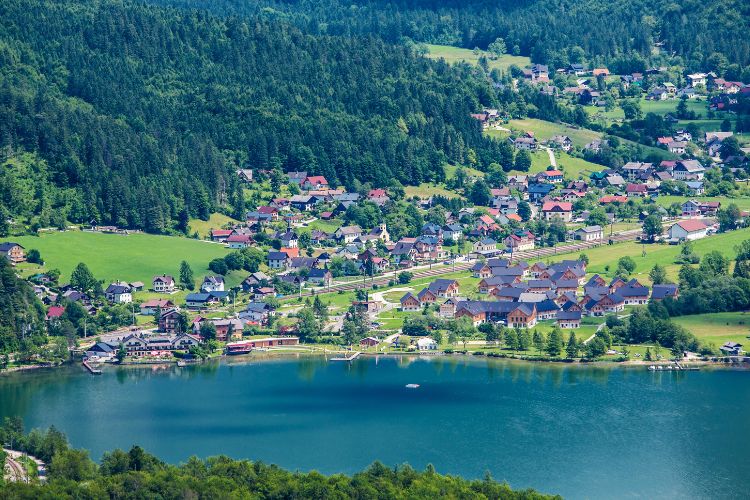


This was a special moment. Once I reached the top near the entrance to the salt mines, there was an almost enigmatic ray of sunlight shining down on Hallstatt’s incredible burial grounds. These burial grounds are renowned for their rich trove of artifacts, including gold jewelry, weapons, and tools, which reflect the wealth and status of the society that once flourished here due to the prosperous salt trade. These discoveries have provided invaluable insights into the early Iron Age in Europe, particularly concerning trade connections, social structures, and daily life. Images via Greig Santos-Buch.
As Hallstatt’s wealth grew through its salt mining operations, so did its influence, which is evident from the extensive archaeological findings of luxury goods such as fine ceramics, textiles, and gold jewelry. These artifacts indicate not only local production but also extensive trade relations with the Greek, Etruscan, and Roman civilizations, which prized Hallstatt’s salt. The salt mines themselves are an archaeological marvel, preserving thousands of years of mining history almost intact, including ancient wooden pipelines and tools. Interestingly, human feces has even been found within the mines, preserved by the salt for thousands of years, which actually still smells when it gets wet as shown here in this interesting documentary called The Celts: Blood, Iron and Sacrifice, presented by anthropologist and professor Alice Roberts, and archaeologist Neil Oliver (available to watch on Amazon Prime Video).

Watch the part of the series “The Celts: Blood, Iron & Sacrifice” above that features and discusses Hallstatt’s significance in terms of ancient Celtic culture.

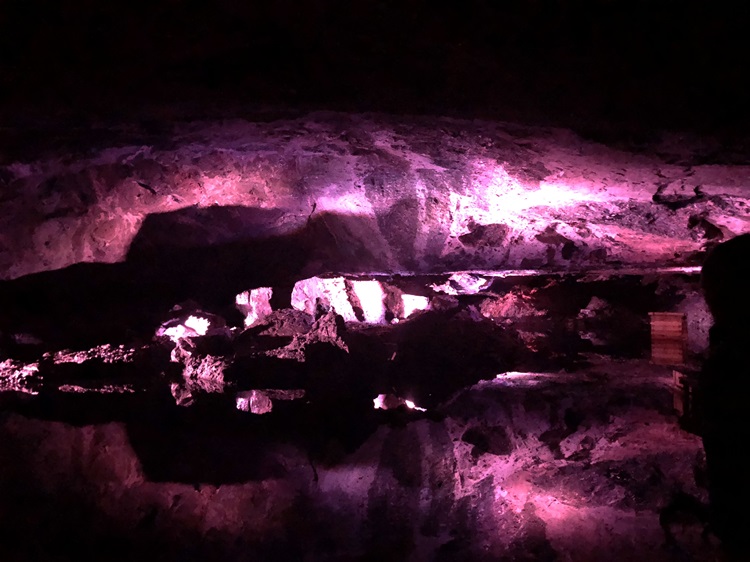
You can take a guided tour of the mines, which includes a stunning light show underground depicting how the mining operations are thought to have worked. You’ll even have the opportunity to physically slide down one of the mining shafts on a wooden slide, and ultimately witness Europe’s oldest (known) and best-preserved staircase, accentuated by another underground light show depicting miners carrying bags of salt back towards the surface. It’s an experience you’ll never forget and gives us chills even as we write this article thinking back on our visit.

Over the centuries, Hallstatt faced various phases of growth and decline, adapting to the shifting dynamics of European history. The continuation of salt mining into the modern era helped preserve its historical importance, ensuring its legacy and recognition as a UNESCO World Heritage site.
How to Get to Hallstatt
Hallstatt is an enchanting experience accessible from major cities like Salzburg and Vienna. Here’s how you can reach this idyllic village:
By Air
For international travelers, the nearest airport is Salzburg Airport (SZG), which has connections from various European cities. Once you land, you can either rent a car, take a train, or use bus services to reach Hallstatt. It typically takes about an hour and 20 minutes by car from the airport to Hallstatt, following the A1 and B166 roads.
By Car
Driving provides a scenic and flexible way to reach Hallstatt. From Salzburg, take the A1 motorway, exit at “Golling-Abtenau,” and follow the B166, which leads directly to Hallstatt. The journey is about 1.5 hours long. If coming from Vienna, the drive is approximately three hours via the A1, exiting at Regau, and then continuing on the B145.
By Train
Trains offer a relaxing way to get to Hallstatt. From Salzburg, take an OBB train to Attnang-Puchheim, then transfer to a regional train to Hallstatt station. This journey takes about 2.5 hours in total. From Vienna, expect around 3.5 to 4 hours of travel time, including transfers at Linz and Attnang-Puchheim. Once at Hallstatt station, a short ferry ride (about 10 minutes) across the lake brings you directly to the village.
By Bus
Buses are an economical alternative. From Salzburg, take bus 150 to Bad Ischl and switch to bus 542 towards Hallstatt. The total travel time is approximately 3 hours. This route offers a chance to view the beautiful landscapes of the Salzkammergut region.
Where to Stay in Hallstatt
The Heritage Hotel Hallstatt

We undoubtedly recommend staying at The Heritage Hotel Hallstatt. The hotel is comprised of three historically significant buildings that have been carefully renovated to provide modern comforts while preserving their historical essence.
Guests can enjoy stunning lake views and easy access to the town’s attractions, as the hotel is located right in the car-free center of Hallstatt. It provides a range of accommodations from standard rooms to suites, all equipped with amenities such as free WiFi, and some with impressive lake views.
Dining at the hotel is a culinary adventure, with the on-site restaurant “Im Kainz” serving both traditional Austrian dishes and modern cuisine, which can be enjoyed on a lakeside terrace. The hotel also offers a daily breakfast and has options for special dietary needs.



Dining at the Heritage Hotel in Hallstatt featuring trout tartare. Also drinking local Austrian wines made with Blaufränkisch and Grüner Veltliner. I also made friends with a local cat. Images via Greig Santos-Buch.
The hotel’s strategic location also makes it an excellent base for exploring the natural beauty of the Salzkammergut region, whether by hiking, boating, or simply strolling through the charming village. Book your stay right here on Tripadvisor.
Alternatively, you can browse and book several other great hotel options around the lake using the interactive map below:
What to Expect and Things to Do in Hallstatt
Hallstatt is postcard perfection. It’s cradled between the Hallstätter See and the towering Dachstein mountains, delivering a tranquil yet breathtaking experience. The village itself is compact and easy to explore on foot, characterized by charming, pastel-colored buildings and narrow, winding streets that exude a storybook quality. Its setting offers dramatic views at every turn, with the mirror-like lake reflecting the alpine scenery and traditional homes.
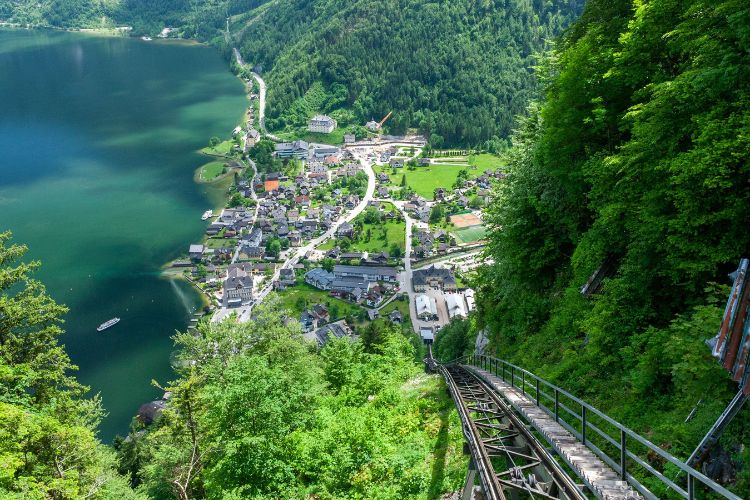
As we mentioned, one of Hallstatt’s primary attractions is its ancient salt mines, accessible via a funicular that ascends the mountain to the mine’s entrance. Here, visitors can explore the history of salt mining through an interactive tour that includes an underground salt lake and ancient mining artifacts. Additionally, the Hallstatt Museum provides a comprehensive look at the area’s history, from prehistoric times to the present, with exhibits that detail the cultural and economic significance of salt mining in the region. But there are plenty of other things to do in Hallstatt as well for any kind of traveler.

For those inclined to natural explorations, the village serves as a starting point for numerous hiking trails, such as the Salt Brine Trail, which offers remarkable views of the town from above. The panoramic Skywalk offers breathtaking views of Hallstatt and the surrounding Alps. For water enthusiasts, boat tours on Lake Hallstatt provide a unique perspective of the village and its idyllic setting.
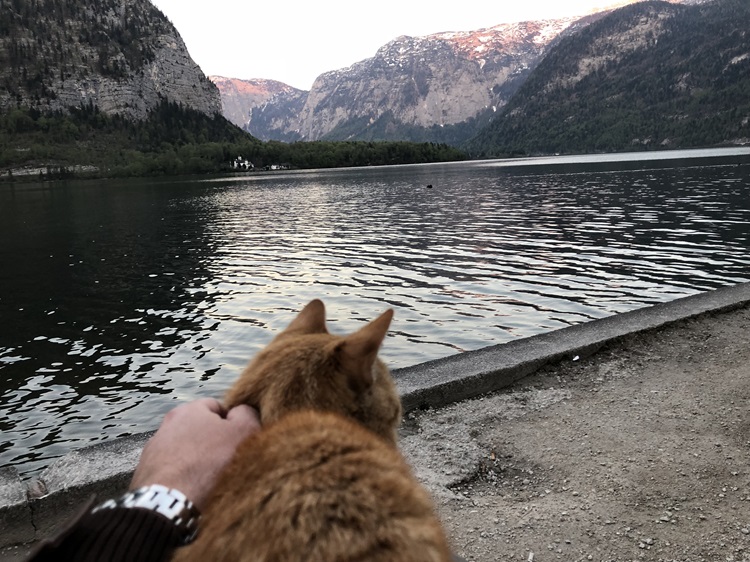
Culinary experiences in Hallstatt are deeply rooted in Austrian tradition, with opportunities to dine lakeside while enjoying local dishes such as schnitzel, accompanied by Austrian wines like Grüner Veltliner (dry white) or Blaufränkisch (gorgeous dry red). The Heritage Hotel, for instance, offers a gourmet restaurant with regional specialties and a waterfront terrace where you can relax with a drink and enjoy the alpine panorama.
Best Hallstatt Tour Options and Transfers from Salzburg and Vienna
Gems of Hallstatt – Private Walking Tour

Experience this trendy destination through a private walking tour with Opatrip.com Austria, where a local guide will unveil Hallstatt’s secrets and fascinating facts. You can book this tour directly within them on Viator right here. Free cancellation up to 24 hours before the experience starts (local time). Reserve now and pay later.
Frequently Asked Questions About Visiting Hallstatt
Absolutely, Hallstatt is worth visiting. Known for its stunning Alpine scenery and rich history, Hallstatt offers unique attractions like the ancient salt mines, picturesque lake views, and the historic village itself. The combination of natural beauty, historical depth, and cultural experiences makes Hallstatt a captivating destination for many travelers.
You can reach Hallstatt from Salzburg by train, bus, or car. The train journey involves a change at Attnang-Puchheim, followed by a local train to Hallstatt and a short ferry ride across the lake. By bus, you would take bus 150 to Bad Ischl, then transfer to bus 542 towards Hallstatt. Driving typically takes about 1.5 hours via the A1 motorway.
Key attractions in Hallstatt include the Salzwelten Hallstatt (salt mines), the Skywalk viewing platform, and the historic Market Square. Don’t miss the Hallstatt Museum for a deep dive into the area’s history and a boat tour on Lake Hallstatt for breathtaking views of the village and surrounding mountains.
Hallstatt offers several restaurants serving traditional Austrian cuisine. Look for places along the lakeside where you can enjoy dishes like schnitzel and local fish, paired with Austrian wines such as Grüner Veltliner or Blaufränkisch. The Heritage Hotel and several local eateries in the Market Square are recommended for an authentic dining experience.
Yes, Hallstatt is an excellent base for hiking enthusiasts. Trails like the Salt Brine Trail offer panoramic views and connect to various points of interest, including waterfalls and the Skywalk. For more adventurous hikes, explore the Dachstein Mountains or the Ewige Wand Trail in nearby Bad Goisern.

The best times to visit Hallstatt are during the shoulder seasons of spring (April to June) and fall (September to October). These periods offer milder weather and fewer tourists compared to the busy summer months, allowing for a more relaxed exploration of the town. Visiting during early morning or late afternoon can also provide a more peaceful experience, as Hallstatt tends to fill with day tourists arriving by bus around mid-morning and departing by late afternoon. If you arrive early, you can enjoy the serene beauty of the village before the crowds, or stay late to witness a tranquil sunset by the lake. During these times, the soft light enhances the scenic views, making it ideal for photography and leisurely walks.
